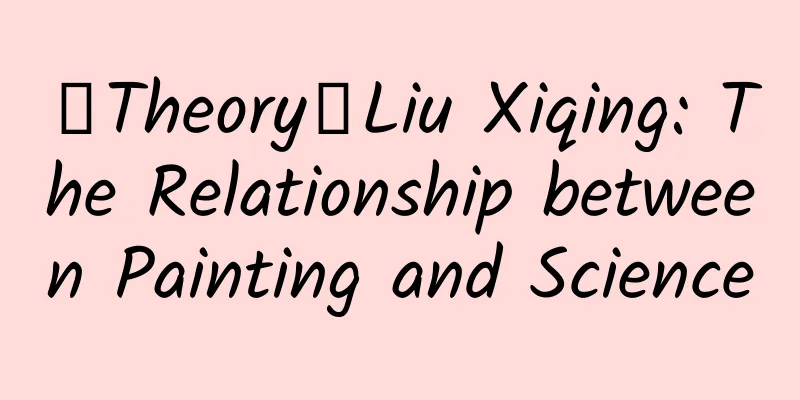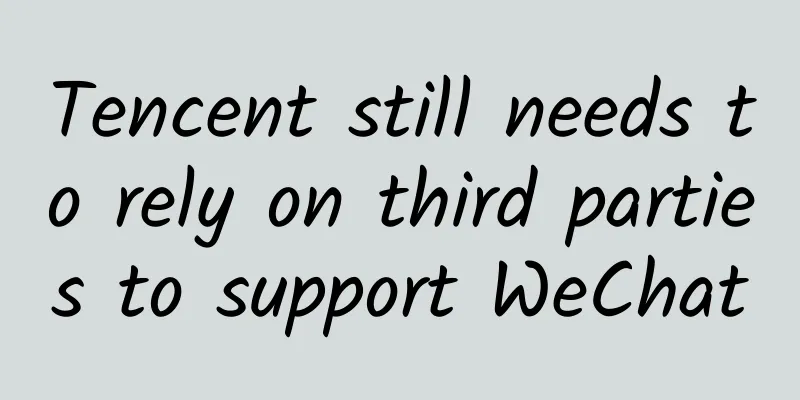【Theory】Liu Xiqing: The Relationship between Painting and Science

|
It is generally believed that the European Renaissance, which began in the second half of the 15th century, was the birth of modern science. However, before this great change came, painting and science had an indissoluble bond - it can also be said that humanism first broke through in the field of art represented by painting, which led to the rise of modern science. Together, they played a vital role in breaking through the shackles of the darkness of the European Middle Ages and promoting the humanistic spirit, and fully demonstrated the history of the coordinated development of modern science and art. In fact, China had its own thinkers on the relationship between painting and science nearly a thousand years earlier than the West. For example, Wang Wei (415-453) lived in the Southern Song Dynasty of my country. His "Explanation of Painting" is an article that mainly discusses the principles and techniques of landscape painting (actually a letter from Wang Wei to his friend, Yan Yanzhi, a famous scholar at the time). Wang Wei's thoughts have important value in the history of Chinese aesthetics. He himself was a person who "loved to learn since he was young, read everything, was good at writing, was good at calligraphy and painting, and also understood music, medicine, and yin and yang." In "Explanation of Painting", he believed that painting is not only a skill, but if it reaches the highest level, it should have the same effect as showing the principles of all things in the world. The ultimate principle of painting also emphasizes the (scientific) principles of "objects are grouped together by their kind" and "things are divided by their shapes." In this way, we can find the picture of the relationship between painting creation and scientific exploration from the perspective of adhering to "cultural confidence." However, regardless of the East or the West, this glorious history has been forgotten in the contemporary world. No wonder Tsung-Dao Lee proposed to rebuild the bridge between science and painting, and advocated the reunion of art and science. Therefore, Wu Guanzhong, a modern Chinese master of painting with scientific thought, wrote at the beginning of the preface to "Selected Essays and Paintings by Tsung-Dao Lee" published by Shanghai Science and Technology Press in 2006: "It was by chance that I met the outstanding scientist Tsung-Dao Lee. He used the language of art to describe the cause and effect of art and science, and guided us to walk between them. Science explores the mysteries of the universe, and art explores the mysteries of emotions. There is a path between mysteries. This path is connected by true nature, and the word "true" is amazing." "There is a hidden path between mysteries" is the title of Wu Guanzhong's collection of paintings inspired by Tsung-Dao Lee. It is also his "true" examination of the relationship between painting art and the natural universe as a painter with extraordinary creativity. To this end, I have also used my nearly 40 years of experience in "scientific art" creation, combined with the relevant discussions of some famous painters and scientists in history, to summarize four "laws" for future fellows who are keen on the integration of painting and science creation and research. Now we will use the form of both pictures and texts to discuss in detail the "relationship between painting and science" in the context of the integration of painting and science. The first “law of equivalence of images” between subjective and objective images “Mathematics is the key to making nature intuitive.” ——Plato came to the conclusion after argumentation Modern research has proven that there are many subjective idealized images in mathematical research; one of the several schools of thought in mathematical research is called "intuitionism." Therefore, some avant-garde scientific books abroad have no choice but to say that mathematical images are actually the "interface" between subjective images and objective images - the "intuitionization" in Plato's proposition is imageization. "Man always wants to paint a simplified and easy-to-understand picture of the world in the most appropriate way; so he tries to replace the empirical world with his world system and conquer it. This is what painters, poets, speculative philosophers and natural scientists do, and they all explore in their own way." —Albert Einstein In addition to artists and scientists in various fields exploring in their own ways, we find that many times the subjective images of painting and the objective images of science have "homologous" origins. Take the most difficult to understand quantum mechanics image in modern science as an example. The creation of "Feynman diagrams" in quantum electrodynamics and the creation of "Feynman figure paintings" in real life have a deep and intrinsic figurative connection in the mind of Nobel Prize winner in physicist Feynman. Figure 1 The "complementarity principle" of Bohr's quantum mechanics seems to be intuitively expressed in the three-dimensional paintings of Czech painter Eugene Ivanov Niels Bohr, the "painter" of atomic cubist structure, the father of the theory of quantized atomic structure, loved cubist paintings created by Picasso and others. These paintings are incomprehensible to ordinary people, but they inspired Bohr. He gradually believed that the invisible atomic world is actually a series of paintings of the cubist structure world, just like a painter's decomposed theme work. The form it appears depends on how you look at it. Bohr, like Copernicus, Galileo, Kepler, Descartes, Newton, Darwin, Pasteur, Mendel and other scientific masters who could draw, was familiar with spatial plastic arts, especially painting, so his quantum mechanical atomic structure model is a three-dimensional picture depicting the microscopic world - even such an abstract and profound scientific theory as quantum mechanics can be interpreted in the form of painting, so the pictures of other disciplines can be reflected in painting. This is indeed the case. Picture 1: Paintings by great scientists from different disciplines, including professional paintings, artistic paintings, and paintings that reflect psychology and wishes. Among them, the schematic diagrams, model diagrams, anatomical diagrams, perspective diagrams, decomposition diagrams, cross-section diagrams, and design diagrams in scientific scenes all require the intervention of drawing skills. With a little search, we can find out that those who use figurative thinking to explore the world picture and integrate scientific thinking are most likely to become top scientific masters: Euclid, Ptolemy, Copernicus, Galileo, Kepler, Descartes, Newton, Darwin, Pasteur, Mendel, Faraday, Freud, Einstein, Jung, Bohr, Wigner, Gamow, Mandelbrot, Feynman, Crick and Watson, Qian Xuesen, Li Zhengdao, etc., are all such scientists. Picture 2: Outstanding painters' paintings involve different subjects, including artistic paintings, professional paintings, and paintings that reflect psychology and wishes. Among them, imaginary paintings, sketches, manuscript paintings, landscape paintings, geometric paintings, light and color paintings, surreal paintings, etc. in the painting scenes all require the intervention of scientific thinking Similarly, we can find out from a brief search that those who use logical thinking to explore ideal pictures and integrate artistic thinking are most likely to become top painting masters. Painters like Brunelleschi, Michelangelo, Raphael, Tuile, Cezanne, Monet, Seurat, Picasso, Dali, Escher, Pollock, Magritte, Kandinsky, Guo Xi, Shitao, Huang Binhong, Li Keran, Wu Guanzhong, etc. are all such painters. Therefore, the "law of equivalence of pictures" requires creativity, imagination, intuition, logic, deduction, and induction in both painting and scientific research, but with different emphases - equivalent but not identical: one creates a scientific masterpiece, the other creates a painting masterpiece. The second "brain collaboration law" of painting creation and scientific exploration "Painting is indeed a science..." ——Leonardo da Vinci concluded after long-term practice The person who is most difficult to distinguish between a painter and a scientist is Leonardo da Vinci, because he used painting as a tool for scientific research and scientific research as the purpose of painting, and achieved brilliant achievements in both major fields of human art and science - in addition to his genius, he made long-term and extensive collaborative use of the two hemispheres of his brain. “Painting is research and experimentation. I never paint as a work of art. All my paintings are studies. I am constantly exploring, and all these studies have a logical sequence… A painter’s studio should be a laboratory where you don’t make art in a monkey’s way, but invent.” —Pablo Picasso In the brain science research of geniuses, the potential of the brain can be activated by forcing the two hemispheres of the brain to strengthen the connection and cooperation in a healthy way. In today's words, it can develop the small universe of the brain, open up the mind and generate brainstorming - only humans who are evolving can do this, Picasso believed that monkeys as animals cannot do such a thing. In fact, the research on Einstein's brain after his death also illustrates this point - he is a model of using both left and right brains and creatively cooperating; at the same time, he is also a person who rarely interweaves spatial graphic images with temporal musical images for thinking, so the theory of relativity about the relationship between time and space cannot be created by others - especially the "general theory of relativity" is really a masterpiece of Einstein's scientific artwork. Figure 2 This scientific cartoon, which reflects Einstein's image thinking at work, was created by the author to commemorate the 100th anniversary of the birth of the "General Theory of Relativity" Some important discoveries about the fine structure and function of the brain were made after entering the 20th century. For example, the concept of "neurophysiology" was proposed, and the "neuron theory" was established, which believed that nervous tissue is composed of various neurons to form a neural network. Later, it was confirmed that neurons are connected through synapses. These concepts laid the foundation for the division of labor and cooperation mechanism of the brain, especially the "brain cooperation law" of painting creation and scientific exploration caused by brain cooperation. No wonder Santiago Ramón y Cajal, the founder of the "neuron theory" and the winner of the 1906 Nobel Prize in Physiology or Medicine, said: "There is no doubt that people without artistic talent cannot appreciate the beauty of science... I must have more than 12,000 (medical) paintings of my own. To people who are insensitive to art, they are just strange patterns, but the mysterious world of brain structure is slowly revealed in these details accurate to one thousandth of a millimeter." Figure 3 Cajal’s famous painting “Neuron” is a true portrayal of the combination of neuroscience and artistic talent The left and right hemispheres of the human brain have their own division of labor, and they also work together. For example, the left brain is abstract mathematics, focusing on theory and analysis, while the right brain is responsible for image recognition, and has a strong intuitive and musical sense. The left and right brains also have a special division of labor for the human body - the left brain processes sensory information from the right half of the body, and the right brain processes sensory information from the left half of the body. The pons is a very important key part - its function and role is to be responsible for the information exchange between the left and right brains, and it has 200 million nerve fibers - this may be the material connection mechanism for the strengthening of the connection and cooperation between the two hemispheres of the brain of outstanding human talents to create the source of creativity. The complex relationship of the collaborative creativity of the left and right brain hemispheres is a big secret. Some people believe that consciousness may be generated by some kind of oscillation in the cerebral cortex; information from different sources converges on neurons in specific brain areas, etc. In any case, the "brain collaboration law" must be the principle to be followed by painting creation, scientific exploration and more advanced integration and innovation. The third “Law of Creative Effectiveness” of Imagery and Abstract Thinking: “Science can seek innovative ideas from art.” ——Conversation between Tsung-Dao Lee and the media Tsung-Dao Lee himself is the best example of practicing his own "law of creative achievement". He has made great achievements in both physical science and painting art throughout his life, and was elected as a member of the American Academy of Arts and Sciences. Therefore, his practice can also make this sentence reversed: "Art can seek logical ideas from science." This can be proved in "Selected Essays and Paintings of Tsung-Dao Lee". "If you have never seen an elephant, can you imagine such a strange thing out of thin air? ... When we study physical problems, we often use various forms of the real world. The more images of things in the world or human society we have, the more helpful it is for abstract thinking." ——Glashow Nobel Prize winner in Physics Glashow's empirical expression of the "Pyramid Creation Effectiveness Law" has also been discussed by Yang Zhenning. In the "Conclusion" of the article "When Painting Incorporates Invention Elements" published in "Knowledge is Power", I also wrote: "Painting (artistic imagination) and invention (scientific and technological creativity) are integrated and interconnected. The author believes that the results of their integration are not a simple addition relationship, but a doubling multiplication relationship, which will surely produce fruitful creative fruits that combine rationality and passion..." For painting creation and scientific innovation, the mutual introduction of the concepts of the two will help to achieve the original effect of achieving twice the result with half the effort. In 1798, a little-known young British scholar named Malthus published a short but influential book, An Principle of Population. His basic theory was that population was growing faster than food supply. In this book, he expressed his ideas in a very grim way, claiming that population growth was geometric, i.e. 1, 2, 4, 8, 16... while food growth was only arithmetic linear, i.e. 1, 2, 3, 4, 5... If we make a rough cross-disciplinary analogy, we will find that Malthus's theory and the views we are about to discuss follow a simple similar pattern: because they both carry arguments of the same quantitative nature - if we compare the arithmetic linear growth of food in "The Principle of Population" to the simple increase of knowledge in a person's lifetime, that is, 1, 2, 3, 4, 5... and compare the integrated development relationship of "science and art" to the geometric growth of population, that is, 1, 2, 4, 8, 16... Then, we will not only appreciate that the integration and interaction of art and science makes absorbing knowledge an interesting thing, but also achieves twice the result with half the effort and can diverge and deduce to amplify learning results, and even greatly increase the multiplier of original knowledge - the talented minds that create this effect do not depend entirely on the genes of the parents, but also require a balanced education in the two aspects of "science and humanities" and their conscious integration. Malthus's Essay on Population has had a significant impact on sociology, economics, medicine and biology (such as the creation of Darwin's theory of biological evolution). Now I think its unique way of thinking will also have a certain indirect impact on the study of the relationship between painting and science - the high yield of hybrid rice by Yuan Longping, a famous rice expert in my country, should be regarded as a remedy for food shortages. Hybridization means the organic fusion of two rice varieties with different characteristics, and one of the results is that a new variety with the advantages of both will appear; and the fusion of the thinking characteristics of the two hemispheres of the brain is the same as its reason, which will have an inexplicable effect of associative high yield, which will make limited scientific knowledge become applicable after being combined with the holistic and associative thinking of painting art, and even learn from one example to draw inferences - however, its exploration process will be full of hardships and confusions like Yuan Longping's experimental research, but also accompanied by the joy of passion. The following painting is the work of Professor Zhang Jun, Vice Dean of the School of Animation and Director of the Animation Department of Communication University of China. He grafted together nine Chinese scientists who won the Nobel Prize in Natural Sciences with ancient Chinese cultural relics, implying that the wisdom of these scientists with pure Chinese blood is closely related to Chinese culture - the profoundness of Chinese cultural thoughts and the cultural confidence of Chinese scientists (especially in the cooperation between the two hemispheres of the brain and the integration of Chinese and Western cultures) are world-famous, and the "creative effectiveness law" of figurative thinking and abstract thinking has played a key role in their academic achievements. Figure 4 "Chinese Scientists Who Won the Nobel Prize" (by Zhang Jun) illustrates that the achievements of Chinese Nobel Prize winners in natural sciences from China, the United States, the United Kingdom and other parts of the world are intrinsically linked to their Chinese cultural genes and humanistic heritage. From left to right, the front row includes: 2008 Chemistry Laureate Roger Tsien (blue-and-white glazed human-shaped jug), 1986 Chemistry Laureate Yuan T. Lee (bronze human-shaped lamp), 2009 Physics Laureate Charles Kao (pottery dancing figurine with a skirt), 1998 Physics Laureate Tsui Chi (Sanxingdui bronze standing figure); from left to right, the back row includes: 2015 Medicine or Physiology Laureate Tu Youyou (Changxin Palace lantern), 1957 Physics Laureates Chen-Ning Yang and Tsung-Dao Lee (gilded bronze double music and dance buckle ornament), 1997 Physics Laureate Steven Chu (painted pottery Celestial King figurine), 1976 Physics Laureate Samuel Ting (bronze Celestial King holding a pagoda). The layout of the picture and the modeling of the characters are very particular, vividly showing the relationship between science and humanities, and the effect is very wonderful - among them, Tsung-Dao Lee, Samuel Ting, Yuan T. Lee, Steven Chu, and Roger Tsien are all members of the American Academy of Arts and Sciences. Even without the title of academician of the Academy of Arts and Sciences, people like Yang Zhenning, Cui Qi and Tu Youyou have demonstrated a dual love for natural sciences and humanities and arts, and are practitioners of the "law of creative effectiveness" of figurative thinking and abstract thinking. Otherwise, they would not have achieved world-class academic achievements. Article 4: "Innovation Aesthetic Law" of Painting Creation and Scientific Creation "The soul of art and science is innovation" ——Inscription by Yang Zhenning when he visited the Sculpture Research Institute of Nanjing University Yang Zhenning is a Chinese scientist who pursues innovation, and the form of innovation is first of all "beauty". In terms of scientific beauty, he believes in the simplicity and perfection of the great British physicist Paul Dirac, and in terms of painting beauty, he appreciates the similarities between French Impressionism and Chinese freehand brushwork. Therefore, he should be an innovator of modern physics who grew up under the influence of both Chinese and Western cultures and is good at inheriting traditions. "Albert Einstein's 'Special Theory of Relativity' and Pablo Picasso's 'Les Demoiselles d'Avignon' ... these two masterpieces share a deeper connection. In that creative moment, the boundaries between disciplines dissolved. Aesthetics became essential." —Arthur I. Miller At the beginning of the preface, we quoted Wu Guanzhong's "hidden path" between science and painting as "truth", and here we are talking about "beauty". In any case, they are different aspects of the big concept of "truth, goodness and beauty" - just like looking at a person, the images from the front, side and back are all different, but in fact they are just different aspects of the same person. If we believe that "aesthetics" can represent our consideration of the harmonious scale of all things in the natural universe, then the relationship and commonality between "scientific beauty" and "artistic beauty" is "aesthetics". Mr. Tang Shougen, a popular science expert in my country, said in the preface to my book "Artists Who Play Science": "The beauty of science and the beauty of art blend together, and 'beauty and beauty' have achieved 'the world's great beauty'! And 'great beauty is speechless'..." Many great scientists and painters in the history of human civilization have used the method of "beauty and beauty together to promote great beauty", which makes their achievements higher than those of ordinary experts. The reason is obvious here. Since we are discussing the relationship between painting and science, let us take a painting as an example to interpret and analyze it in detail. The following Chinese fine brush painting titled "Little Flowers" artistically shows from one side that in the first half of the 20th century, when China was in the bloody period of the Anti-Japanese War, a young female soldier of the Eighth Route Army who loved beauty occasionally picked a bunch of wild flowers to appreciate, but attracted a colorful butterfly to visit and make people imagine the beautiful and moving scene. The author is Gao Yun, a famous contemporary Chinese painter. He uses Chinese fine brush painting, a two-dimensional static modeling art form with almost no light and shadow, and his own authentic line drawing, color and rendering with oriental style to depict a vivid picture of revolutionary romanticism. This painting uses the unique "white space" treatment of Chinese painting without any background, and adopts the pure and refined brushstrokes of traditional Chinese fine brushwork to depict the female figures, plants and animals with oriental charm with full concentration, making the three echo each other. Although it does not directly reflect the fighting scenes of young female soldiers in the midst of war, it has conveyed the historical message that the revolutionary soldiers yearn for a peaceful and beautiful life and that the war of resistance will surely win. Figure 5 Gao Yun’s meticulous painting “Small Flower” (right) has the meaning of “beauty coexisting to achieve great beauty” of artistic beauty and scientific beauty. If the paintings of soldier flower, butterfly flower and grass flower (the three small pictures on the left) are removed, the painting can still be called “Small Flower”, but the beauty of meticulous painting, the beauty of biology and the beauty of humanity are incomplete. This painting should be a masterpiece of Chinese meticulous painting with revolutionary romantic sentiments and the meaning of natural history and fraternity. From the perspective of biology and psychology, the only "three things" in the picture (people - female Eighth Route Army soldiers, animals - colorful butterflies, plants - wild chrysanthemums) have mutual needs and echoes: the female Eighth Route Army soldiers need flowers and plants to dress up, taste the fragrance of wild flowers, and appreciate the dancing and colorful butterflies - which means that they yearn for a colorful life without war and peace; flowers need butterflies to pollinate and prosper their populations with their fragrance and colors; butterflies need to suck nectar from flowers to reproduce in order to survive, and they benefit from flowers. The picture of colorful butterflies perched on the shoulders of young female soldiers will give people rich associations: in the war years, despite the hard life and frugality, our simple, clean and beautiful young female soldiers still sprouted the fragrance of youth... To exaggerate, the butterflies "forgot" to patronize the color and fragrance of flowers - the holistic natural history thinking of Chinese painting is vividly reflected in this painting. The clothing and the "Eighth Route Army" logo indicate the spring season and the Anti-Japanese War era - it can be said that the scientific research is consistent with the artistic pursuit of this painting: simple, beautiful and rich in connotation. The above four laws are interrelated, interact with each other, and form an organic whole. The essence of these laws comes from four world-renowned modern scientists (Cajal, Einstein, Tsung-Dao Lee, and Glashow), three modern and contemporary Chinese and foreign painting masters (Leonardo da Vinci, Picasso, and Wu Guanzhong), a great philosopher of ancient Greece (Plato), an outstanding modern Chinese physicist and Nobel Prize winner (Chen-Ning Yang), and a contemporary historian of science and aesthetician (Arthur I. Miller). The author has summarized, refined, and simplified them. Main references [1] Leonard Schlain. Art and Physics: Artistic and Physical Perspectives on Space, Time and Light[M]. Translated by Bao Yongning and Wu Boze. Changchun: Jilin People's Publishing House, 2001. [2] Jackson. A Journey in Mathematics (Color Print) [M]. Translated by Gu Xuejun. Beijing: Posts and Telecommunications Press, 2014. [3] Albert Einstein. The Collected Works of Albert Einstein (Volume 3)[M]. Compiled by Fan Dainian, Zhao Zhongli, and Xu Liangying. Beijing: The Commercial Press, 1979. [4] S. Rosenthal. Some memories of Niels Bohr [M]. Translated by Cheng Youshu and Lin Hua. Nanjing: Jiangsu Education Press, 1994. [5] James W. McAllister. Beauty and the Scientific Revolution[M]. Translated by Li Wei. Changchun: Jilin People's Publishing House, 2000. [6] R. Moore. Niels Bohr[M]. Translated by Bao Yongning. Beijing: Science Press, 1982. [7] Arthur I. Miller. Einstein Picasso: Space, Time and the Beauty of the Soul[M]. Translated by Fang Zaiqing and Wu Meihong. Shanghai: Shanghai Science and Technology Education Press, 2003. [8] F. Capra. The Tao of Physics: Modern Physics and Eastern Mysticism[M]. Translated by Zhu Runsheng. Beijing: Beijing Publishing House, 1999. [9] Liu Xiqing. When painting incorporates elements of invention[J]. Knowledge is power, 2015(10):68-71. [10] Yang Zhenning. Yang Zhenning's Writings: A Scientific Master's Views on Humans and the World [M]. Selected by Yang Jianye. Haikou: Hainan Publishing House, 2002. [11] Zhao Zhongli, Xu Liangying. A Collection of Translations in Memory of Albert Einstein [M]. Shanghai: Shanghai Science and Technology Press, 1979. [12] Wendy Plum. Structure in Science and Art. Translated by Cao Bo. Beijing: Huaxia Publishing House, 2003. [13] Liu Xiqing, Luo Mei. Einstein, the interpretation of the miracle of life: commemorating the 100th anniversary of Einstein's creation of the theory of general relativity [J]. Knowledge is power, 2015(11):52-55. [14] Sun Jiaxiang. Interpretation of Modernist Painting[M]. Shanghai: Shanghai Education Press, 2010. [15] Lin Fengsheng. Paintings with Messages: Interpreting Scientific Elements in Famous Paintings[M]. Shanghai: Oriental Publishing Center, 2013. [16] Liu Xiqing. “Beauty” is the common element of science and art. Nanjing: Proceedings of the Fifth Congress of Jiangsu Science and Technology Artists Association, 2008. [17] Liu Xiqing. “Artists” who play with science (Part 1)[M]. Beijing: Posts and Telecommunications Press, 2017. [18] Liu Xiqing. “Artists” who play with science (Part 2)[M]. Beijing: Posts and Telecommunications Press, 2017. [19] Dai Jie. Aesthetic interpretation of Wang Wei's Narrative Painting[J]. Art Education, 2009(09):119. [20] Liu Xiqing. “Scientists” who play with art[M]. Beijing: Posts and Telecommunications Press, 2020. [21] Liu Xiqing. Narrating Paintings: Interpreting the Scientific Stories Behind Paintings[M]. Beijing: Science Popularization Press, 2019. (Typesetting: Zhang Xinmu Editing: Yao Lifen Huang Qianhong Reviewing: Zhang Zhimin) |
<<: Is it scientific to walk a hundred steps after a meal and live to 99?
Recommend
How to use Tik Tok recommendation algorithm to build brand?
In the past two years, we have seen the rise of T...
The world's first wooden satellite is about to be unveiled. Why do the United States and Japan use wood to build satellites?
In 2024, the United States and Japan will use the...
Information flow promotion is ineffective. Are you using the correct copywriting scenarios?
Today a friend sent me an h5, which is about a ne...
Arthritis is not caused by freezing, but I still advise you to wear long johns
gossip In the past, there was a kind of cold call...
Why are coffee stains always darker at the edges and lighter inside? There's an interesting scientific mystery behind it
In life, everyone has the experience of accidenta...
Mastering the tips when exercising can easily lower your blood pressure. Learn these 5 techniques quickly!
High blood pressure is like a slow knife, lurking...
How to know in advance when an earthquake is coming?
At 12:52 on September 5, 2022, a 6.8-magnitude ea...
Xpeng Motors cuts its sales area in half, eliminates inefficient direct-sale stores, and accelerates its layout in second- and third-tier markets
According to multiple sources, Xpeng Motors has d...
iQiyi's patch ads display format and charging standards
In the field of mobile online video, iQiyi, Tence...
Why does Microsoft prefer mobile keyboard apps recently?
[[163288]] Recently, Microsoft quietly launched a...
Why does my neighbor always come to my house to drink water? I found out the reason after using Suning XiaoBiu R400-W1 water purifier
With the rise of drinking water health issues, th...
It's either 3 or 5 blades, why do electric fan blades have to be an odd number?
Audit expert: Zhao Liangyu Associate Professor, F...
The farce of “Qin Lang lost his homework” has come to an end. Have you been deceived too?
Editor’s Note: "Qin Lang, Grade 1, Class 8, ...
6 design highlights to make fission activities successful!
Recently, a friend who works in operations compla...
Apple urgently releases iOS 14.7.1 official version to fix two major bugs
[[413605]] The official version of iOS 14.7.1 has...









